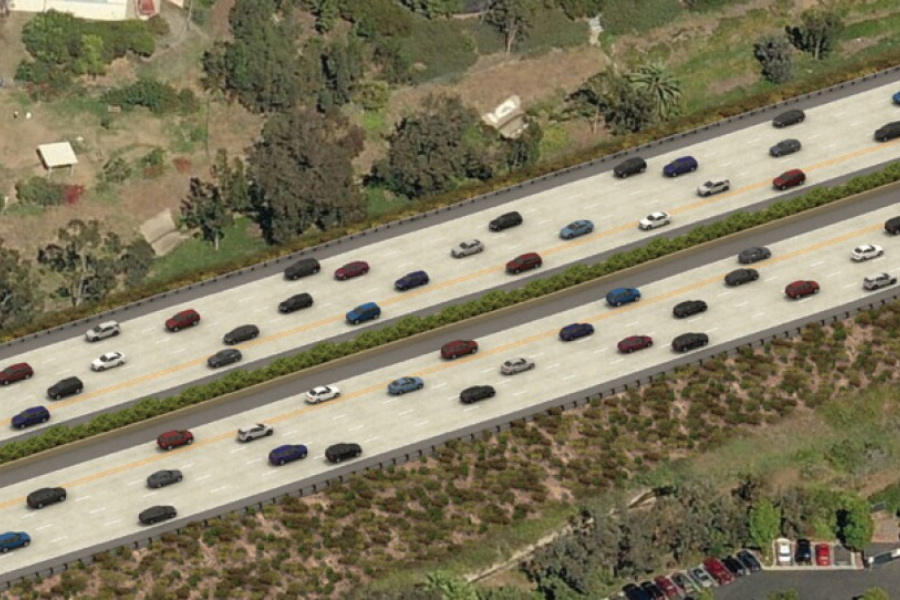OCEANSIDE – For anyone who regularly commutes through North County, the bottleneck at the interchange between State Route 78 (SR-78) and Vista Way leading to southbound Interstate 5 (I-5) is a well-known source of frustration. For years, motorists and local leaders have voiced concerns about the outdated design and its inability to handle current traffic volumes. While the problem has persisted for decades, recent discussions suggest that relief may finally be within reach.
On January 24, a joint press conference in Oceanside brought together Congressman Mike Levin (D-CA), County Supervisor Jim Desmond, and Encinitas Mayor Catherine Blakespear. The event highlighted a potential funding pathway for long-overdue upgrades to this critical interchange. The officials expressed optimism about leveraging resources from the federal Infrastructure Investment and Jobs Act to kickstart the design and engineering phases of the project.
A Long-Standing Traffic Nightmare
The SR-78 and Vista Way interchange has been a contentious issue for years. Originally designed decades ago, the interchange was built to accommodate far fewer vehicles than those it now serves. Today, with exponential growth in population and traffic, the area has become a “nightmare” for commuters, as Levin aptly described it during the press conference.
This stretch of roadway serves as a vital artery connecting coastal cities like Oceanside, Carlsbad, and Encinitas to inland communities such as Vista and San Marcos. However, the outdated infrastructure often leads to gridlock during peak hours, frustrating thousands of drivers and creating ripple effects across the region’s transportation network.
Supervisor Desmond emphasized the importance of addressing the issue, stating, “This interchange is not just a local problem; it’s a regional challenge impacting commerce, emergency response times, and overall quality of life for residents.”
Federal Infrastructure Funding: A Ray of Hope
One of the most promising developments in the push to improve the SR-78/I-5 interchange is the potential use of federal funds from the $1.2 trillion Infrastructure Investment and Jobs Act. Signed into law in 2021, this sweeping legislation allocates significant resources to modernizing America’s aging infrastructure. Congressman Levin, a vocal advocate for addressing North County’s transportation challenges, has been working to secure a portion of these funds for the interchange project.
“The Infrastructure Investment and Jobs Act presents a historic opportunity to tackle long-standing infrastructure problems like this one,” Levin said. “By securing federal funding, we can move forward with the design and engineering work necessary to make this interchange functional and efficient for future generations.”
Levin’s efforts focus on obtaining initial funding to cover the planning and design phases, critical steps in transforming the interchange from a concept to a shovel-ready project. Once these phases are completed, additional funding will be needed to support the construction process.
The Economic and Environmental Impacts
Upgrading the SR-78 and I-5 interchange is more than a matter of convenience; it’s an economic and environmental necessity. Traffic congestion at this bottleneck has a significant economic cost, with delays leading to lost productivity and increased fuel consumption. Businesses that rely on efficient transportation for goods and services are also adversely affected.
Encinitas Mayor Catherine Blakespear highlighted the broader implications of the project. “When traffic grinds to a halt, it’s not just frustrating for drivers. It’s a drain on our economy and contributes to unnecessary greenhouse gas emissions. Fixing this interchange will help reduce pollution and support our regional climate goals.”
In addition to easing congestion, the project aims to improve safety. The current interchange layout has been linked to frequent accidents, as vehicles merge and weave through limited space. A redesign would not only improve traffic flow but also enhance safety for all road users.
Community Support and Regional Collaboration
Local leaders and community members have long advocated for improvements to the SR-78/I-5 interchange. However, bringing such a complex project to fruition requires coordination among multiple agencies, including Caltrans, SANDAG (San Diego Association of Governments), and local municipalities.
Supervisor Desmond underscored the importance of collaboration, stating, “This is not something one agency can tackle alone. It’s going to take a unified effort at the local, state, and federal levels to get this project across the finish line.”
Community feedback will also play a crucial role in shaping the project’s design. Public workshops and forums are expected to provide residents with opportunities to voice their concerns and priorities, ensuring the final plan reflects the needs of those most affected.
Challenges Ahead
Despite the momentum generated by the Infrastructure Investment and Jobs Act, significant challenges remain. Securing federal funds is a competitive process, with countless infrastructure projects across the country vying for limited resources. Moreover, the cost of upgrading the interchange is expected to be substantial, potentially reaching hundreds of millions of dollars.
Construction will also pose logistical challenges, as the interchange must remain operational during the upgrade process. Minimizing disruptions to traffic while completing such a large-scale project will require careful planning and execution.
A Vision for the Future
For commuters and local leaders alike, the prospect of a modernized SR-78 and I-5 interchange offers hope for a smoother, safer, and more efficient transportation network. The project aligns with broader efforts to address infrastructure needs across North County, including improvements to other critical corridors and transit systems.
Congressman Levin concluded the press conference with an optimistic message: “This interchange has been a source of frustration for far too long. By working together and leveraging federal resources, we have a real chance to fix this problem and improve the daily lives of North County residents.”
As the project moves forward, the region will be watching closely. For now, the commitment of local leaders and the potential for federal funding provide a glimmer of hope that the long-standing traffic woes at the SR-78 and I-5 interchange may finally become a thing of the past.
Next Steps and Timeline
While securing funding for the design and engineering phases is an important first step, the timeline for the project remains uncertain. Once the initial phases are funded and completed, additional resources will be needed to cover construction costs. Depending on the availability of funds and the complexity of the design, construction could take several years to complete.
In the meantime, officials are encouraging residents to stay informed and engaged. Regular updates on the project’s progress will be shared through public meetings, newsletters, and online platforms.
For now, the SR-78/I-5 interchange remains a critical priority for North County’s transportation future, symbolizing the broader challenges and opportunities of modernizing infrastructure in a rapidly growing region.











